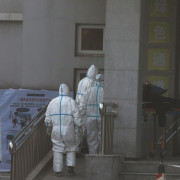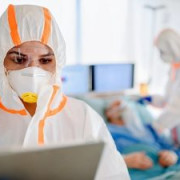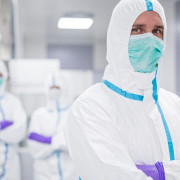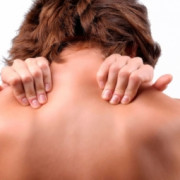Статистика распространения коронавируса в венгрии на сегодня, 24 декабря 2020
Содержание:
Способы распространения covid-19
Основным способом передачи коронавируса является воздушно-капельный. То есть вирус можно передать при общении, чихании или кашле. Также коронавирус считается опасным в связи с тем, что передается через прикосновения (сама инфекция может находиться на поверхности).
Вирус довольно живучий и может существовать вне человеческого организма до 2 дней.
Основные симптомы Коронавируса
Симптомы коронавируса схожи с ОРВИ, простудой или же гриппом. Также заболевание может происходить и вовсе бессимптомно, человек даже не будет подозревать, что он болен, при этом заражая других людей.
Симптомы:
- Слабость/усталость
- Лихорадка
- Сухой кашель
- Затрудненное дыхание
- Реже расстройство пищеварение
На основе проведенных тестов ВОЗ сформировали следующую статистику симптомов коронавируса:
- жар (87,9% случаев)
- сухой кашель (67,7%)
- слабость в теле (38,1%)
- образование мокроты в горле (33,4%)
- одышка (18,6%)
- сухость в горле (13,9%)
- миалгия (боли в мышцах) (14,8%)
- головные боли (13,6%)
- озноб (11,4%)
- тошнота или рвота (5%)
- насморк (4,8%)
- диарея (3,7%)
- кровохарканье (0,9%)
Как правило симптомы начинают появляться на 5-6 день после заражения вирусом.
Основные меры профилактики
Ниже представлены главные правила профилактики:
- Чаще мойте руки с мылом (старайтесь мыть руки 10-15 раз в сутки)
- Избегайте мест с массовым большого скопления людей
- Делайте влажную уборку помещения и проводите проветривание 2-3 раза в день
- Используйте медицинские маски в общественных местах
- Отмените все путешествия на ближайшее время
Карта распространения коронавируса онлайн
У нас представлена интерактивная онлайн карта с отображением распространения коронавируса в России и мире (все данные взяты из официальных источников, включая Всемирную Организацию Здравоохранения).
Все данные обновляются каждые 10 минут. Помимо онлайн карты, у нас вы найдете таблицу с информацией о заражениях в мире и России, а также динамику распространения COVID-19 по дням.
Следите за последней информацией по распространению коронавируса в России и мире онлайн вместе с нашим сайтом! Найти человека по имени и фамилии с минимальным набором информации.
-
18 июля
Количество погибших от коронавирусной инфекции превысело 600 000 человек в мире. -
27 июня
Число заболевших коронавирусом в мире превысело 10 000 000 человек. -
30 мая
По официальным данным число зараженных коронавирусом в России превысило 400 000 человек. -
10 мая
По официальным данным число зараженных коронавирусом в России превысило 200 000 человек. -
9 мая
По официальным данным число зараженных превысило 4 млн. человек. -
14 апреля
По официальным данным число зараженных превысило 2 млн. человек. -
9 апреля
Число зараженных коронавирусом в России превысило 10 000 человек. -
2 апреля
Официально зарегистрированных случаев заражение более 1 млн. человек. -
11 марта
Всемирная Организация здравоохранения объявляет о пандемии коронавируса. -
6 марта
Число зараженных по всему миру превышает 100 000 человек. -
1 марта
Число смертей от вируса COVID-19 превышает 3 000 человек по всему миру. -
27 февраля
Коронавирус зафиксирован на всех континентах мира кроме Антарктиды. -
31 января
В России зафиксирован первый случай заражения вирусом. -
30 января
Германия фиксирует свидетельства бессимптомной передачи коронавируса. -
11 января
Умер первый пациент с обнаруженным коронавирусом нового типа COVID-19. -
30 декабря
Китайский вирусолог сообщил о новом коронавирусе, но ему не поверили. В результате врач сам заразился и умер.
The Indiana Department of Health is closely monitoring a pandemic of the 2019 novel (new) coronavirus or COVID-19. This new respiratory virus was first identified in the city of Wuhan in China’s Hubei Province and continues to infect people in China and around the world, including the United States.
On March 6, the state Department of Health confirmed the first case of COVID-19 in a Hoosier with recent travel. On March 16, ISDH reported the first death in Indiana due to COVID-19. On May 18, Indiana confirmed its first case of multisystem inflammatory syndrome in children (MIS-C) that has been associated with COVID-19.
The dashboard below will be updated daily with the most up-to-date case counts. Please click here for the most recent press releases related to COVID-19.
The state Department of Health is working with federal and local partners, including the Centers for Disease Control and Prevention (CDC), to respond to this evolving public health situation.
Please consult this page for updated news and guidance on the COVID-19 pandemic. Updates will be made as new information becomes available. Please contact your healthcare provider if you experience symptoms of COVID-19 including fever, cough, shortness of breath, fatigue, muscle or body aches, headache, new loss of taste or smell, sore throat, congestion or runny nose, nausea or vomiting, and diarrhea. Symptoms may appear 2-14 days after exposure to the virus. Please immediately seek care if you experience symptoms such as trouble breathing, persistent pain or pressure in the chest, new confusion, inability to wake or stay awake and bluish lips or face.
General questions from the public or healthcare provider inquiries about COVID-19 may be directed to the state Department of Health COVID-19 Call Center at the toll-free number: 877-826-0011 (8 a.m. to 5 p.m. daily for public and healthcare providers).
Important Information
- Commissioner’s Order: Statewide Standing Order for the Administration of Vaccines by Other Providers (updated 12/17/20)
- Commissioner’s Order: Statewide Protocol and Appendix for the Administration of Vaccines by Other Providers (updated 12/17/20)
- COVID-19 Indiana County Guidelines by Color (updated 12/10/20)
- Executive Order 20-50: Executive Order 20-50: Continuation of County-based Measures and Restrictions Based on the Impact and Spread of the Coronavirus Disease
- Commissioner’s Order: Statewide Standing Order for the Administration of Vaccines (updated 10/01/20)
- Commissioner’s Order: Indiana Statewide Standing Order to Address the COVID-19 Outbreak (updated 4/30/2020)
- Commissioner’s Order: Concerning Relocation of LTC Facility Residents during the COVID-19 Outbreak (updates 4/14/20)
- Watch Governor Holcomb’s next COVID-19 briefing (updated 10/14/20)
- Commissioner’s Order: Requirements for Reporting COVID-19 Information to the State Department of Health (updated 6/01/20)
- See Governor Eric J. Holcomb’s Newsroom
- COVID-19 Resource Guide for Hoosiers Looking for Assistance (updated 9/02/20)
- Department of Workforce Development Resource Page (updated 3/16/2020)
Tweets by StateHealthIN
Что такое Коронавирус COVID-19
Коронавирусом является огромное семейство вирусов вызывающие множество заболеваний у людей, от легкой простуды до тяжелого респираторного синдрома или атипичной пневмонии и воспалительного процесса пищеварительного тракта. Само название Коронавирус появилось из-за формы вируса. Она имеет оболочку с редкими шипами или ворсинками, напоминающую корону.
Важной особенностью коронавирусов является то, что они попадают иммунокомпетентные клетки и используют их для перемещения по всему организму, тем самым распространяясь с высокой скоростью и подавляю иммунную систему человека, которая просто перестают бороться с вирусом. Обычно данные вирусы вызывают заболевания в легкой форме, но иногда у больного может развиться ТОРС — тяжелый острый респираторный синдром, который быстро приводит к смерти
TRANSMISSION
28. How does COVID-19 spread?
The World Health Organization states «The spread of COVID-19 between humans is being driven by droplet transmission.The virus is transmitted from a sick person to a healthy person through respiratory droplets when the sick person coughs or talks close to another person. People may have been exposed and infected but are NOT necessarily transmitting the disease. More investigations into potential other routes of transmission are ongoing. What has been reported so far it that the main driver of transmission is droplet transmission from people with symptoms.»
29. What should I do if I have had close contact with someone who has COVID-19?
Notify public health authorities in your area who will provide guidance on further steps to take. If you develop any symptoms, it is important that you call your healthcare provider for advice, mentioning that you have been in contact with someone with COVID-19.
30. Does COVID-19 spread through the air or air-conditioning?
So far there is no evidence that this virus is spread through the air or through air-conditioning systems. The patterns of spread are consistent with transmission through droplets from an infected person to someone who is in close unprotected contact. Nevertheless, in the hospital setting, patients are currently managed in special ‘negative pressure’ rooms if available, and healthcare workers will take ‘airborne precautions’ when performing certain procedures.
31. Can the virus be transmitted through packages shipped from an area with COVID-19?
This coronavirus is primarily spreading to people who are in close unprotected direct contact with an infected person. Currently there is no evidence to support transmission of COVID-19 associated with imported goods.
TREATMENT
32. Can COVID-19 be treated?
Not specifically. Patients receive supportive care, aimed at relieving their symptoms and preventing complications while they recover. This can include the use of mechanical ventilation if required. There is no specific antiviral therapy against this disease. Antibiotics are only effective against diseases caused by bacteria, not viral diseases like COVID-19.
33. Is Tamiflu useful?
The antiviral medication Tamiflu (oseltamivir) is not effective against COVID-19. Tamiflu is used to treat influenza.
35. What about alternative treatments?
Some authorities have recommended alternative treatments for COVID-19. However, there is no evidence to confirm or disprove the effectiveness and safety of alternative treatments.
GOING OUT
25. Is it safe to use public transport and to take taxis or private-hire cars?
A private-hire car and taxi companies often provide masks for their drivers and encourage them to disinfect their vehicles frequently. Drivers have been advised to wind down their vehicles’ windows when ferrying passengers with flu-like symptoms, and after every completed trip, to improve ventilation in their vehicles. They have also been advised to take their temperature twice a day, once before starting work and at another time in the course of the day. Trains and buses will be disinfected more regularly, especially touch points such as grab poles, overhead handles and seats. Surfaces at public transport stations will be cleaned and disinfected.
26. Is it safe to go shopping?
While it is good practice to avoid crowded areas where possible, shopping activities can still continue if proper hygiene standards are followed closely. Malls have stepped up measures to regularly disinfect common areas, and have made hand sanitizers available to shoppers. Some malls have also ceased all public events, such as workshops and mass exercise activities.
27. Is it safe to stay in a hotel?
Yes, most hotels have stepped up sanitation measures, including thorough cleaning of common areas. Should you have any doubts contact your preferred hotel before travelling for detailed information regarding their respective actions.
IMPORTANT INFORMATION
For more precise information
on your specific flight, you can always check its status and details in
your WIZZ profile (or the profile owner). Please sign-in to see the
information.
You can also monitor our Flight
Status function on both website and application, though please note it will
display the flight status only on and for the date of the flight.
To check currently
applicable travel regulations per specific country, check Country Specific Travel Information page.
To know more about currently operating routes and specific travel rules please visit our Travel Planning Map or check out Trip Planner for best
offers on our website.
PROTECTING THE YOUNG AND OLD
36. What can the elderly, children and others who may have weaker immunity do?
Older people, and people with pre-existing medical conditions such as diabetes and heart disease, appear to be more vulnerable to becoming severely ill with the virus. Dr Edwin Chng, medical director of healthcare provider Parkway Shenton, said that these people should avoid unnecessary visits to clinics and hospitals as far as possible. This is to reduce exposure to bugs, as those with a weaker immune system are more susceptible to infections. They should stay indoors as much as possible, and avoid crowded areas and people who are unwell. Finally, they should wear a surgical mask if they are unwell, and practice good hand hygiene at all times.
37. Children have weaker immunity. Shouldn’t they wear masks?
Masks are generally not needed for people who are well, including children, said Associate Professor Thoon Koh Cheng, head and senior consultant of the infectious diseases service at KK Women’s and Children’s Hospital. He said a child can wear a well-fitted child-size mask when he has a fever, cough or runny nose, or when he is recovering from an illness. To be effective, change the mask regularly, or when it is soiled or wet. Wash hands with soap and water after disposing of the soiled mask properly into a bin, he said.
38. What precautions should I take to protect my children if they are ill?
The advice for unwell children is the same for adults. People who are unwell should seek medical attention promptly, stay at home to rest and avoid crowds.






